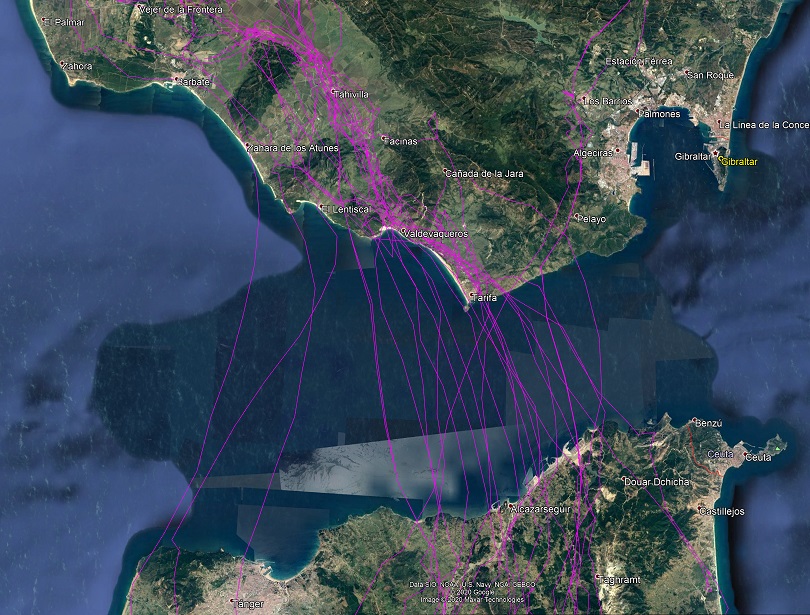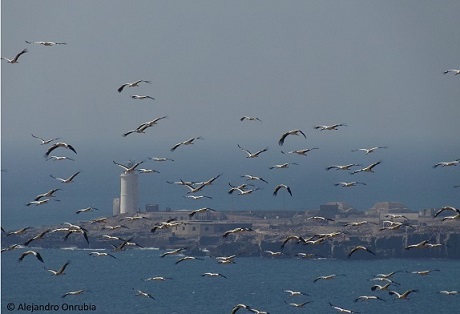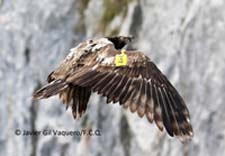Soaring landbirds typically exploit atmospheric uplift as they fly overland, displaying a highly effective energy-saving locomotion. However, large water bodies lack thermal updrafts, potentially becoming ecological barriers that hamper migration. The effects of a sea surface on the migratory performance of GPS-tagged white storks (Ciconia ciconia) were assessed before, during and after they crossed the straits of Gibraltar. Oversea movements involved only flapping and gliding and were faster, traversed in straighter, descending trajectories and resulted in higher movement-related energy expenditure levels than overland, supporting the water barrier hypothesis. Overland movements at both sides of the sea straits resulted in tortuous routes and ascending trajectories with pre-crossing flights showing higher elevations and more tortuous routes than post-crossing, thus supporting the barrier negotiation hypothesis. Individual positions at both ends of the sea narrow were predicted by zonal winds and storks´ location at entry in the European hinterland, and birds did not show compensational movements overland in anticipation to subsequent wind displacements oversea. The length of the water narrow at departure shore, the elevation therein and the winds on route affected major components of sea crossing performance (such as distances and times overwater, minimum elevations, climb angles, speeds and energy expenditure), supporting the departure position and oversea winds hypotheses. In summary, this study provides a prime example at high temporal resolution of how birds adjust their behavior and physiology as they interact with the changing conditions of the travelling medium, reallocating resources and modifying their movement to overcome an ecological barrier. informacion[at]ebd.csic.es: Blas et al (2020) Overland and oversea migration of white storks through the water barriers of the straits of Gibraltar. Scientific Reports 10: 20760. DOI 10.1038/s41598-020-77273-x. See Spanish press release
www.nature.com/articles/s41598-020-77273-x


 La migración marítima de las cigüeñas por el estrecho de Gibraltar
La migración marítima de las cigüeñas por el estrecho de Gibraltar



